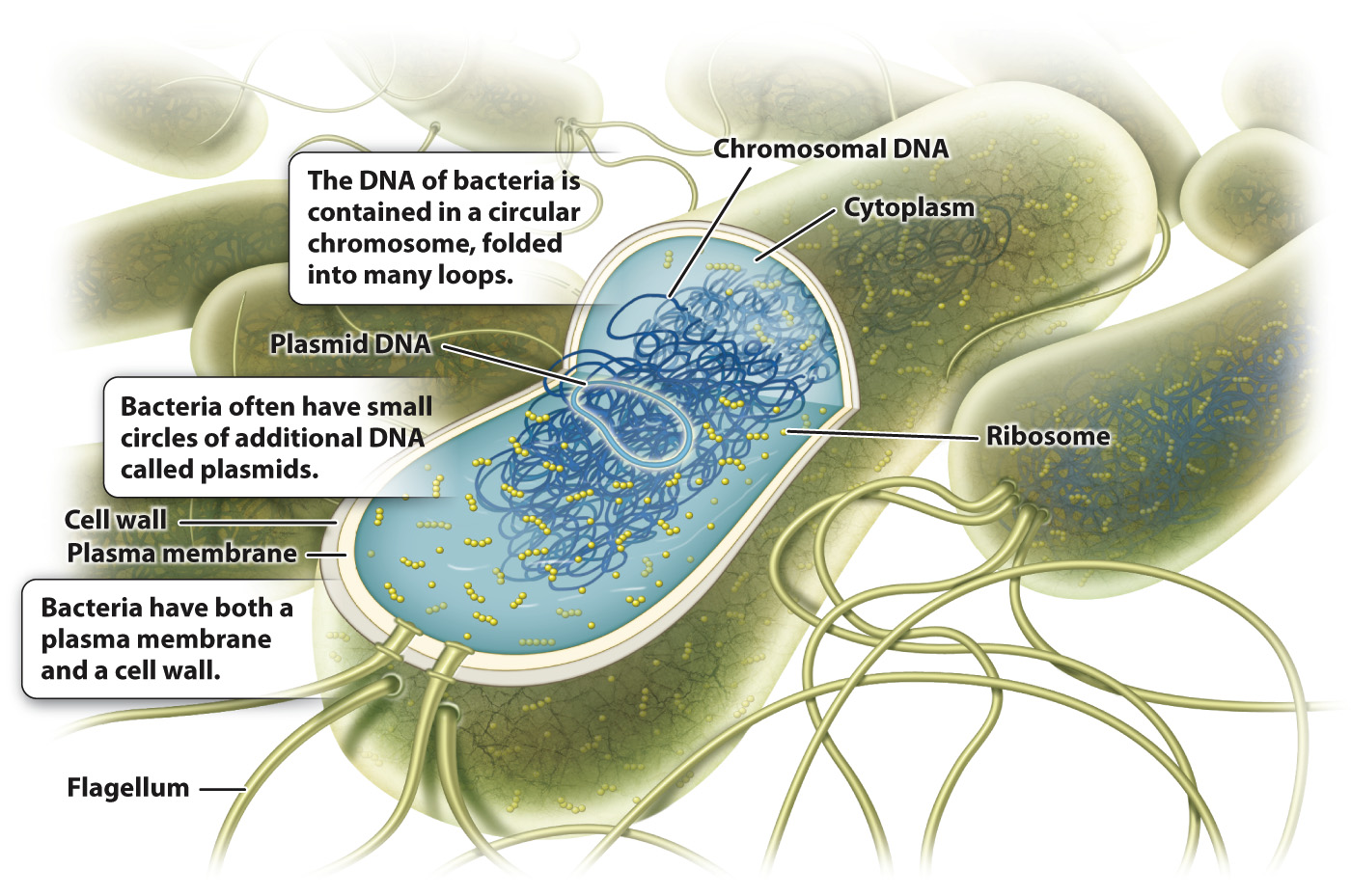The bacterial cell is small but powerful.
Because of their small size and deceptively simple cell organization, bacteria were long dismissed as primitive organisms, distinguished mostly by the eukaryotic features they lack: They have no membrane-
Fig. 26.1 illustrates the bacterial cell, which was briefly introduced in Chapter 5. The cell’s DNA is present in a single circular chromosome, in contrast to the multiple linear chromosomes characteristic of eukaryotic cells. Many bacteria carry additional DNA in the form of plasmids, small circles of DNA that replicate independently of the cell’s circular chromosome. In general, plasmid DNA is not essential for the cell’s survival, but it may contain genes that have adaptive value under specific environmental conditions. No nuclear membrane separates DNA from the surrounding cytoplasm, and so transcribed mRNA is immediately translated into proteins by ribosomes.

Bacteria lack the membrane-
Structural support is provided by a cell wall made of peptidoglycan, a complex polymer of sugars and amino acids. Some bacteria have thick walls made up of multiple peptidoglycan layers, while others have thin walls surrounded by an outer layer of lipids. For many years, it was believed that bacteria lacked the cytoskeletal framework that organizes cytoplasm in eukaryotic cells. However, careful studies now show that bacteria do have an internal scaffolding of proteins that plays an important role in determining the shape, polarity, and other spatial properties of bacterial cells (Chapter 10).